Here in the Andes, every year travellers just like you wonder about the different things to do at Machu Picchu and how to witness the mystical essence of the most popular destination in South America.
One of the things you will discover is that ancient Machu Picchu still provides the setting for the economic and cultural revival of the Incas’ descendants. So, before wondering about what to do in Machu Picchu, take a moment just to think about the construction of the site and try to imagine how such an archeological complex played an important role in the Andes culture, then get ready to be enchanted by its impressive stone walls, and magical, mystical, and religious character.
Read on to find some valuable information to enjoy the most of the tour during your Peru travel experience.

How to Visit Machu Picchu
Visiting Machu Picchu is a once-in-a-lifetime experience, the fulfillment of a childhood dream for many! But these days, it’s highly regulated by the government, with a lot of rules about when and how you can tour the ruins. (For more details on planning your trip to Machu Picchu, check out our complete Machu Picchu travel guide).
Machu Picchu Circuits
Machu Picchu is divided into several visitor circuits, each offering a different route through the site with access to specific areas. The reservation system was introduced to better manage crowds and preserve the ruins.
Some circuits include iconic spots like the Guardian’s House with its postcard views, while others explore lesser-known areas or connect to additional hikes like Huayna Picchu.
Choosing the right circuit is essential, as your ticket only allows entry to one route. Not sure which one to pick? Head to our blog post about Machu Picchu circuits where we break down each circuit and help you decide which is the best fit for your visit.
Machu Picchu Tickets & Entrance Times
Whether you take the train or do a Machu Picchu trek, you will have to book ahead. Entry to Machu Picchu is highly controlled, and tickets have been known to sell out well in advance for certain entry times. In particular, if you plan to book a hike with a Machu Picchu visit, only a small number of tickets are available each day:
- 50 for Huchuy Picchu
- 300 for Huayna Picchu, and,
- 200 for Machu Picchu Mountain.
If you know you want to do one of these hikes, you should tell us at the time of booking.
Since 2019, the entrance to Machu Picchu has been by the hour – meaning, you have to decide what time to enter Machu Picchu at the moment you purchase your ticket. The entry times for the standard Machu Picchu ruins guided tour are distributed in 9 intake periods, starting at 6am and ending at 2pm. The site closes at 5pm. Note: there is a 30-minute grace period for each hourly ticket; if you arrive after that time, you will be denied entry.
Entry permits for tickets which include one of the Machu Picchu hikes vary. For instance, there are only 2 intake periods per day for Huayna Picchu and Machu Picchu Mountain.
Some independent travellers prefer to do the booking process by themselves, but doing this is a little bit risky due to timing: it can be tricky to coordinate your ticket entrance times with the time of the trains, and you also must enter with a guide. We recommend hiring a guide regardless, as a guide can share fascinating insights about Hiram Bingham’s 1911 expedition and help you fully appreciate the surrounding mountains and scenery. A guided tour usually takes around 3 hours.
If you want to avoid all that stress, we recommend booking though an agency. Our friendly and experienced staff is more than ready to assist you, so contact us to book your Machu Picchu experience.
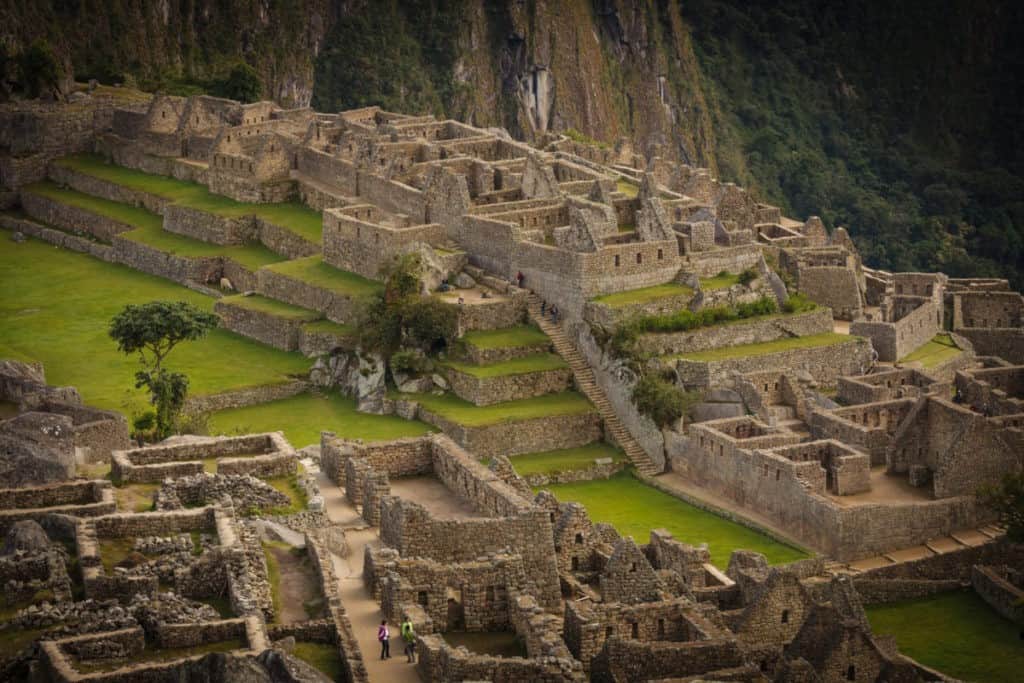
Visiting the Incan Citadel: Things to do in Machu Picchu
In the Citadel of Machu Picchu, you will identify two main areas: the urban area which includes monuments, funerary chambers and housing sub-areas, and the agricultural area which covers a variety of terraces. But wait, there are more things to see in Machu Picchu! You will observe a drain channel that lies between these two areas and apparently it was built to deal with the heavy rains of the Andean region.
Regarding the Machu Picchu attractions, it is important to pay close attention to small details. In the centre of the ancient city, you will see a vast arcade. On the left of this square, find the solar observatory – believed to have been used for astronomical observations which you can access through a stairway that starts behind an open building with only three walls. If you head to the front of this building, you will find a small square better known as the main shrine.
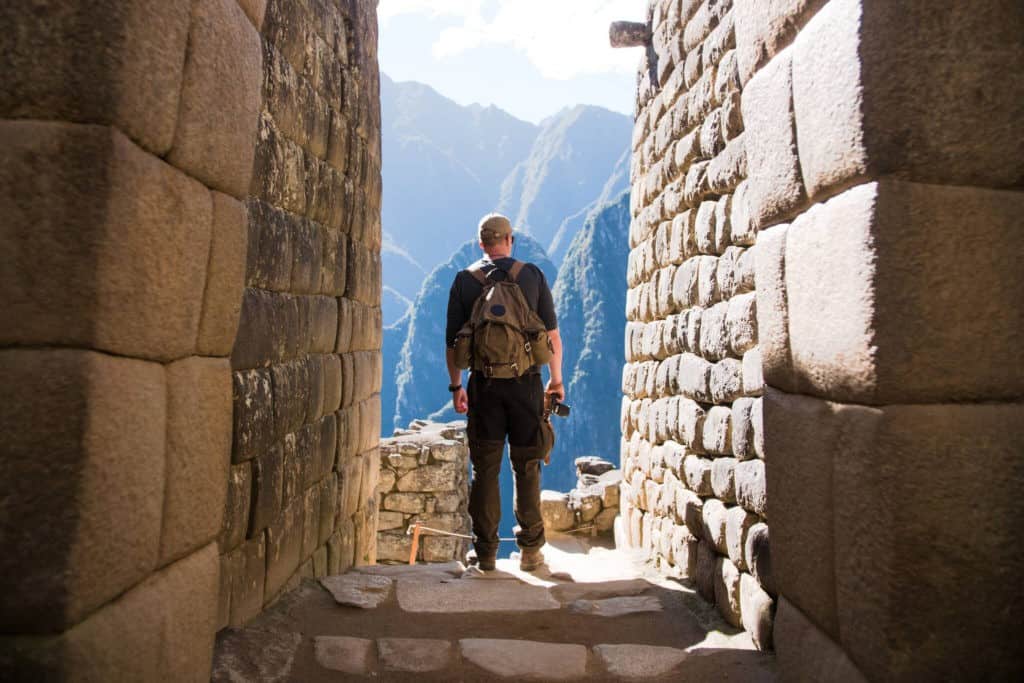
Here is an overview of what you can see at Machu Picchu, places to visit on your tour.
Discover the Intihuatana
What you are going to find here is one of those places to visit in Machu Picchu with a sacred story behind it. Two interesting aspects of Intihuatana to keep in mind: First, its location on the top of a ceremonial hill; and second, the carved stone that was used in the construction of the site, also served as an element for rites.
Explore the Temple of the Sun
This attraction is a good photo opportunity because is the only circular building in Machu Picchu. But besides that, it is one of the spots with the most ritual meaning in the masonry.
Observe the landscape through the Temple of 3 Windows
What you can do at Machu Picchu is walk to the sacred plaza, and explore this site, and admire the view through its three windows towards the main square.
Learn about the purpose of the terraces
There are so many things to do at Machu Picchu, including learning about its ancient architecture. As you walk along the terraces built into the slope of the mountain, you will notice two types: the agrarian terraces used for cultivation, and others designed as retaining walls to stabilize the slope and prevent landslides.
The Sun Gate
This path made of steps is one of the most important archaeological constructions that connects with the main site of Machu Picchu and its surrounding attractions. Its precise position is aligned with the sun’s path, as the building is dedicated to the cult of Inti, the sun god. Indeed, throughout the year, the sun shines directly through this structure.
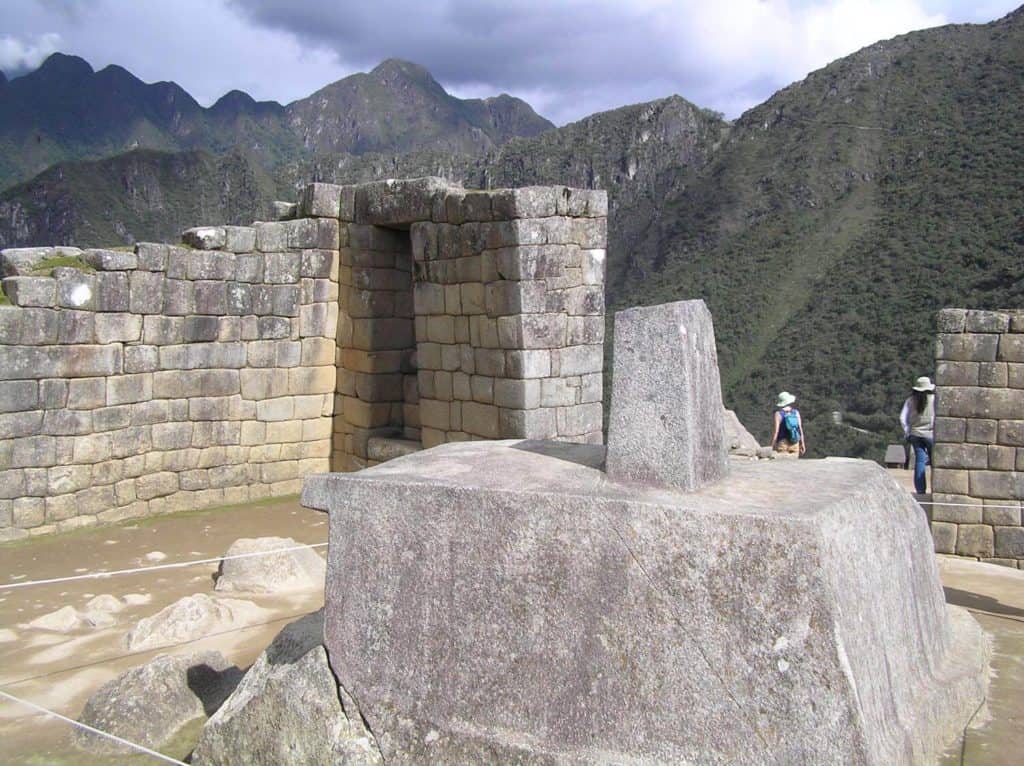
Watchman’s Hut
This site is part of the agricultural area where Incas used an elaborate drainage system for cultivating maize (corn, aka choclo. Read more about Peruvian corn here!)
Take a break in the Caretaker’s Hut
Close to the main entrance door, you can admire the only renovated building in the site. It has a roof, so if your tour is during the rainy season, this is the right spot to listen to the melody of the rain while you connect with a marvelous landscape.
Find the Funerary Stone
This sacred rock, easy to find in the upper agricultural area, represents the surrounding hills, but during the Inca Empire, it had a ritual role.
Temple of the Condor
At this temple, you will have the chance to appreciate how these architects used their ability to transform a natural formation into a place with a deep ritual meaning.
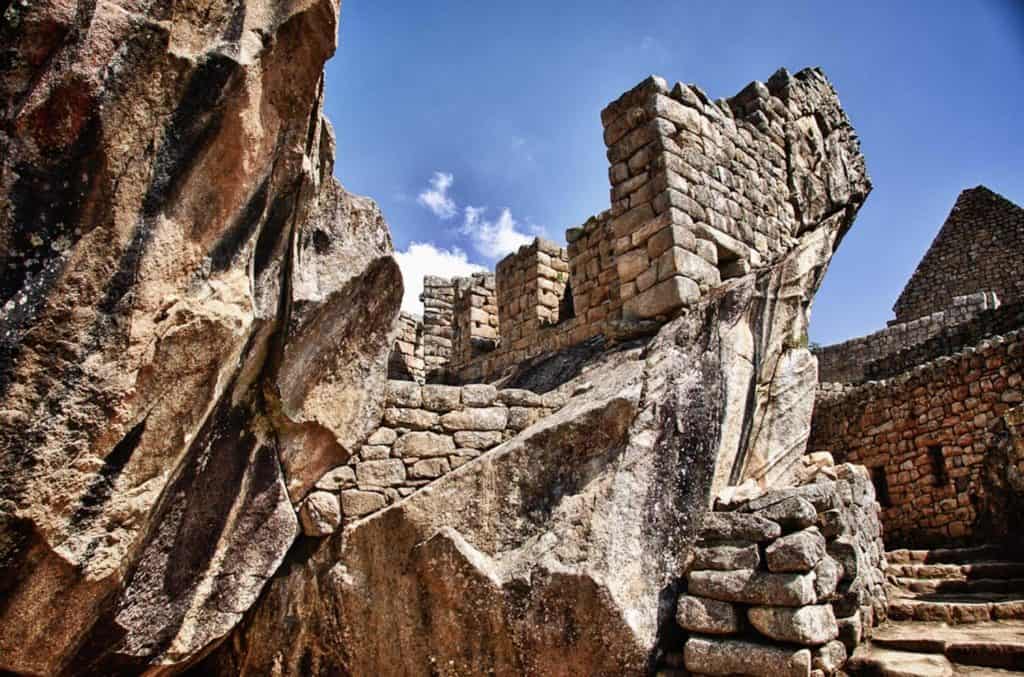
Pay a visit to the Royal Tomb
If you wonder what is there to do in Machu Picchu, we recommend not to miss the opportunity to visit the Royal Tomb. There is a kind of mystery related to this site, not just because of its location (under the Temple of the Sun) but also because it is considered that it was the place where the Incas kept their royal mummies!
Admire The Fountains
Machu Picchu has survived through time, natural conditions and massive tourism with the help of natural spring waters that run over little fountains which fill over 16 baths. Using 750 meters of stone channels, the Incas showed their skills in engineering and architecture to keep the water running.
Visit the Palace of the Princess
Also known as the “Ñusta Palace” (palacio de las ñustas), this Machu Picchu attraction is located next to the architectural complex where the Temple of the Sun is found. According to some historians, it served to house the virgin princesses of the Inca empire known as ñustas, or Sun princesses.
Walk the Principal Temple
This attraction got its name due to its large size. When you walk the vast area pay close attention to the gorgeously cut stone and the huge foundation blocks. Keep your eyes open for a kite-shaped stone which is believed to represent the Southern-Cross star formation.
Appreciate the Sacristy / House of the Ornaments
When you reach this spot, you may think that this is the finest building in Machu Picchu, and you are right about that! During Inca times, this sacristy was a room to store ornaments, just focus your attention on the many niches scattered around the room.
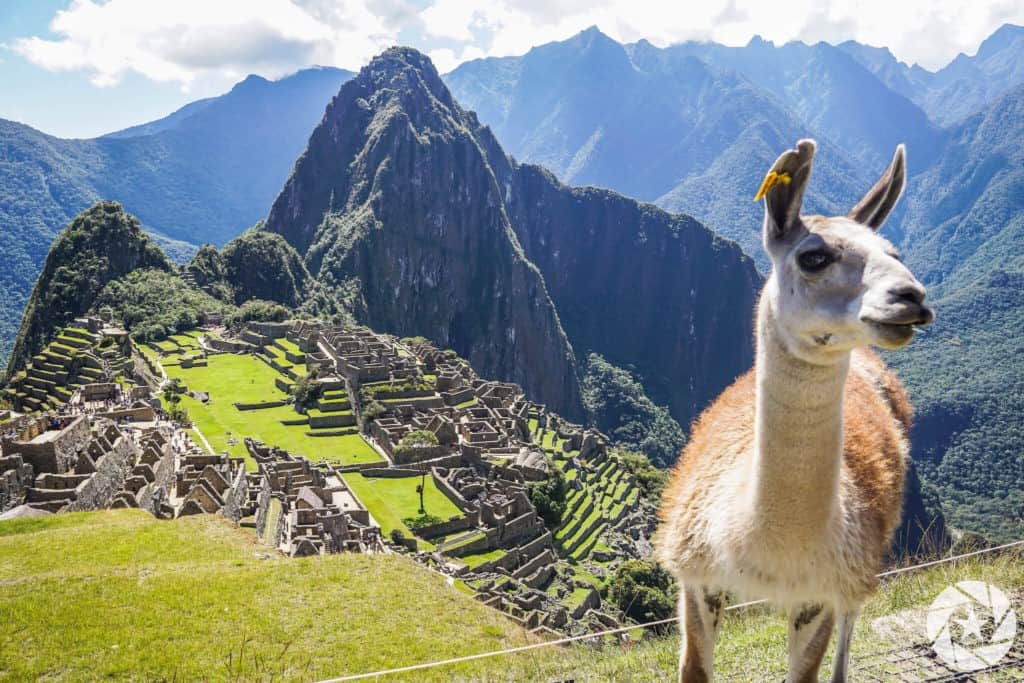
Spot Llamas at the Central Plaza
This is a great opportunity to spot the odd llamas grazing. This large grassy area lays between the residential buildings and the functional buildings. So, once you are there, enjoy it, admire it but be careful not to step on the grass: walking on the grass is not allowed.
Marvel at the Sacred Rock
Historians still are not certain what this sacred rock was used for, but there is one art-related theory that suggests musical and poetry recitals took place right there where you will be standing. Something you will notice is that this fascinating stone takes the shape of Putucusi mountain that you can see behind it.
Discover the Industrial Section
You have seen sacred places, palaces for kings and princesses but what about the average Inca person? Where did they live? Well, it is thought that in this large section of Machu Picchu the everyday Inca citizen practiced their social life.
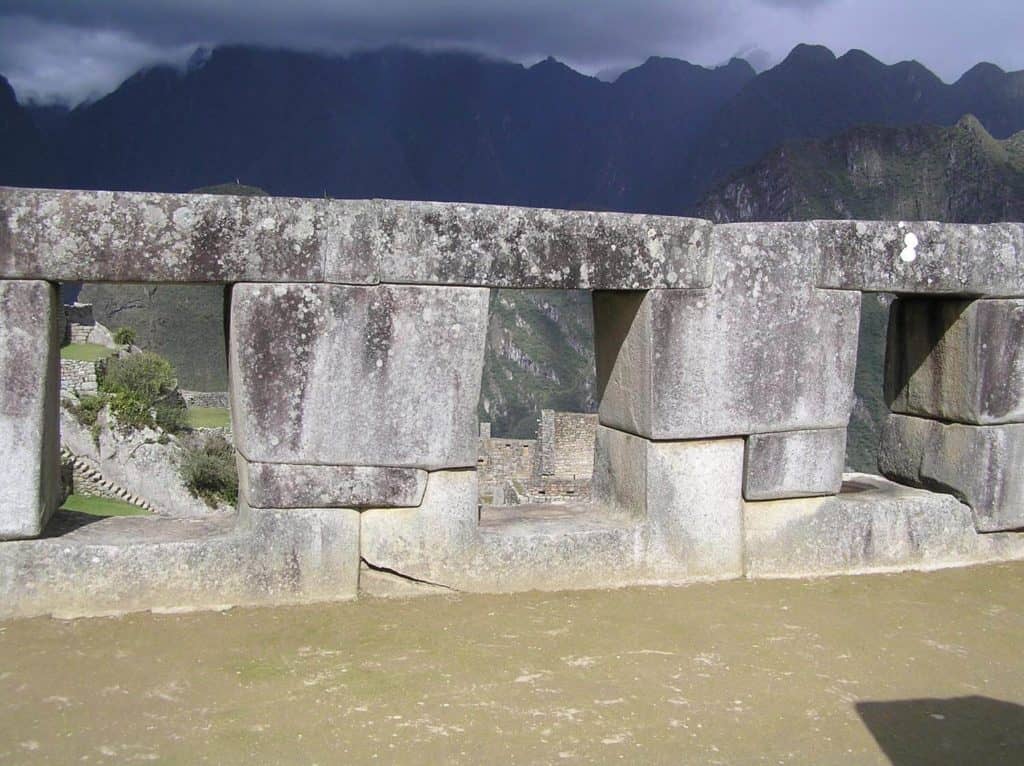
Visit the Prison Group
All societies had prisoners and Incas were no exception. Following their procedures for law and order, they kept their prisoners above and underground and sometimes in deep holes with cell doors.
Find Intimachay – The Cave of the Sun
If you are getting to Machu Picchu during December for the summer solstice, you will be the lucky one to enjoy a once-in-a-lifetime view of this temple that comes alive with its rear wall radiantly illuminated by the light of the great sun.
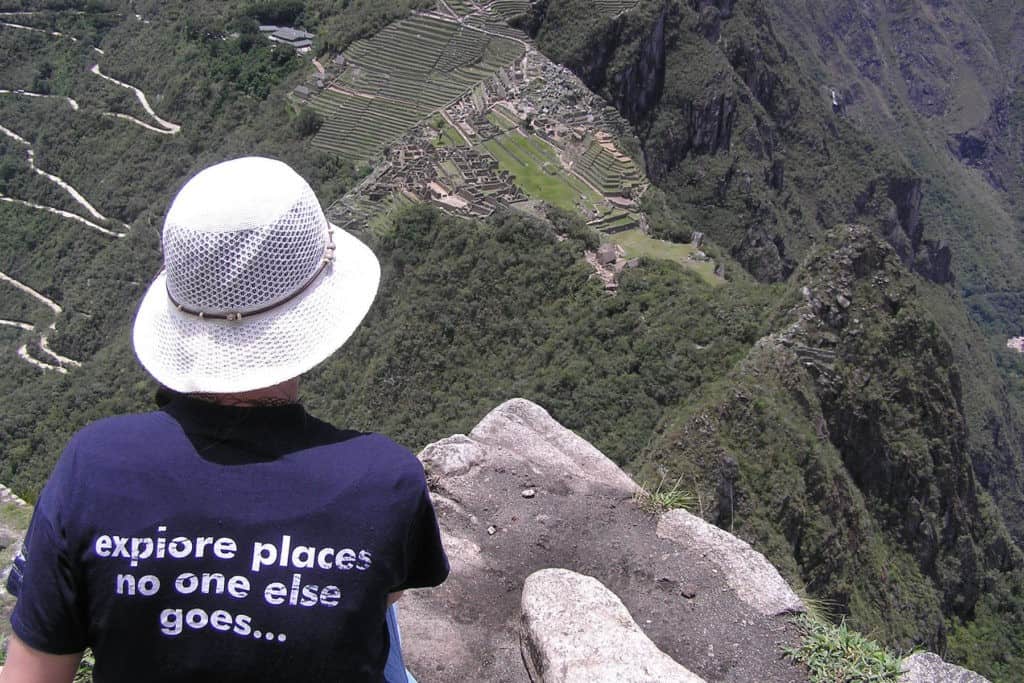
More Things to Do around Machu Picchu: Climb Huayna Picchu & More!
Huayna Picchu
Climb the majestic mountain called Huayna Picchu, which rises behind Machu Picchu, and you will be rewarded with sweeping views and the snow-capped peaks of the surrounding mountainside.
Huayna Picchu – which means “young peak” in Quechua (machu picchu means “old peak”) – is actually the mountain that you see in those classic shots of Machu Picchu. It’s a challenging climb, and definitely not for the faint of heart! But for those who are up for it, the views make it all worth it. From the peak of the mountain, you can enjoy a wonderful view of the Urubamba River below, and on the north, you will observe the Temple of the Moon, which you can visit by taking an optional detour.
Machu Picchu Mountain
One of the greatest Machu Picchu experiences for avid explorers is climbing “Machu Picchu Montaña” where, during Inca times, locals held different types of ceremonies related to their cosmovision.
Machu Picchu Montaña (also sometimes called Cerro Machu Picchu in Spanish) is the mountain above the citadel, in the direction of Inti Punku, the Sun Gate.
If you couldn’t purchase a ticket for Huayna Picchu or simply don’t like heights, the three hour hike to Machu Picchu Montaña is a great option. This summit is located 601m above the citadel of Machu Picchu (at 3051m in altitude). While hiking this mountain, you will find yourself in a quiet place surrounded by nature with lots of fresh air and a panoramic view of the Incan ruins.
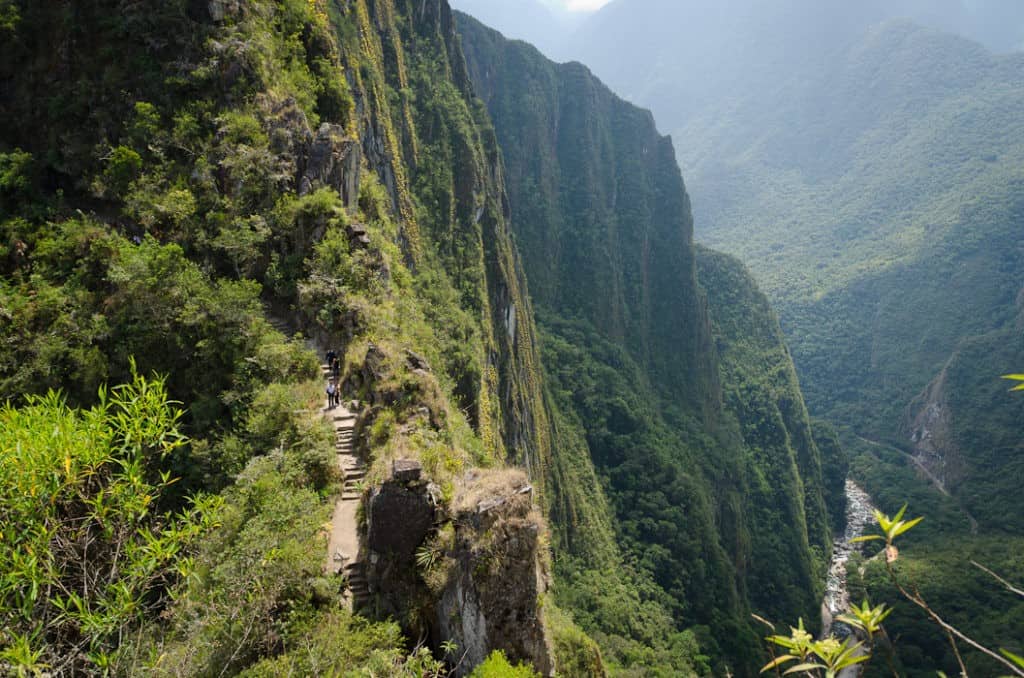
Huchuy Picchu Mountain
Recently, local authorities have opened the hiking trail to the summit of this lower mountain that guards the ruins of the citadel and is located next to the popular Huayna Picchu.
The route takes you to the top of Huchuy Picchu mountain (huchuy picchu means “small peak”) and then back along Circuit 3. Huchuy Picchu is an easy to moderate hike, and it will take you approximately 40 minutes to 1 hour, depending on your physical condition. Its altitude reaches 2497m, just 50m higher than the ruins of Machu Picchu – that’s probably why it’s called the “small” peak!
Visiting Machu Picchu: Things to Do in Aguas Calientes
What can you do in Machu Picchu besides touring the Inca citadel or taking one of the famous hikes? Actually, quite a lot! The nearby village of Aguas Calientes has plenty to offer – like relaxing in the local hot springs or visiting the Mandor Waterfall.
If you venture a little outside the village, you will also find lesser-known spots that many visitors miss because they are only focused on seeing Machu Picchu. Thinking of staying longer in Aguas Calientes? Check out our blog posts on the best hotels in town and top things to do in Aguas Calientes while you are there.
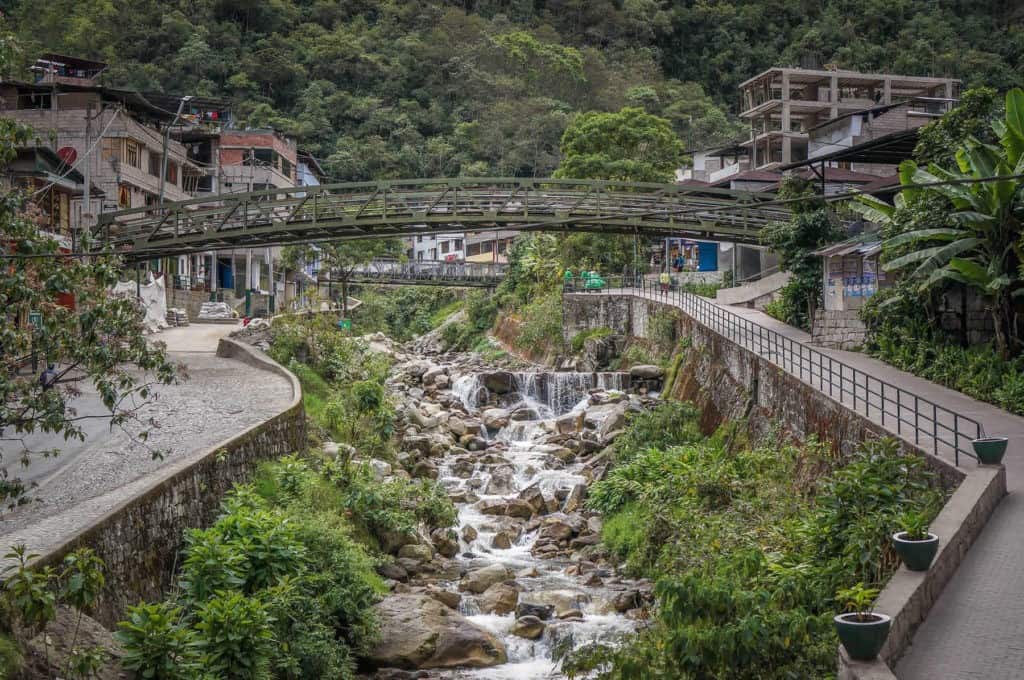
Stay at the Machu Picchu Sanctuary Lodge
If you are looking to make your Machu Picchu visit truly unforgettable, consider a night at the Belmond Sanctuary Lodge – this lodge is the only hotel located right at the entrance to the citadel. Yes, it is a splurge, but the experience is absolutely one-of-a-kind.
Staying here means you can skip the early morning shuttle bus ride from Aguas Calientes and be among the first to enter the site at dawn. As other visitors head back down in the early afternoon, you will still be there to enjoy the changing light and calm atmosphere in the late afternoon and early evening. There is simply no other place where you can have sunrise coffee or a quiet evening moment with a view of the ruins just outside your door.
The hotel offers a peaceful, intimate experience far from the busy town below. It is a chance to connect more deeply with the magic of Machu Picchu – without the crowds. Thoughtful touches like complimentary rain ponchos, reusable water bottles, and spa treatments inspired by Inca traditions add to the comfort and uniqueness of the stay.
If Machu Picchu is your once-in-a-lifetime adventure, this is one upgrade that truly enhances the journey.
Book your stay:
Check availability on Booking.com
Compare prices on Agoda
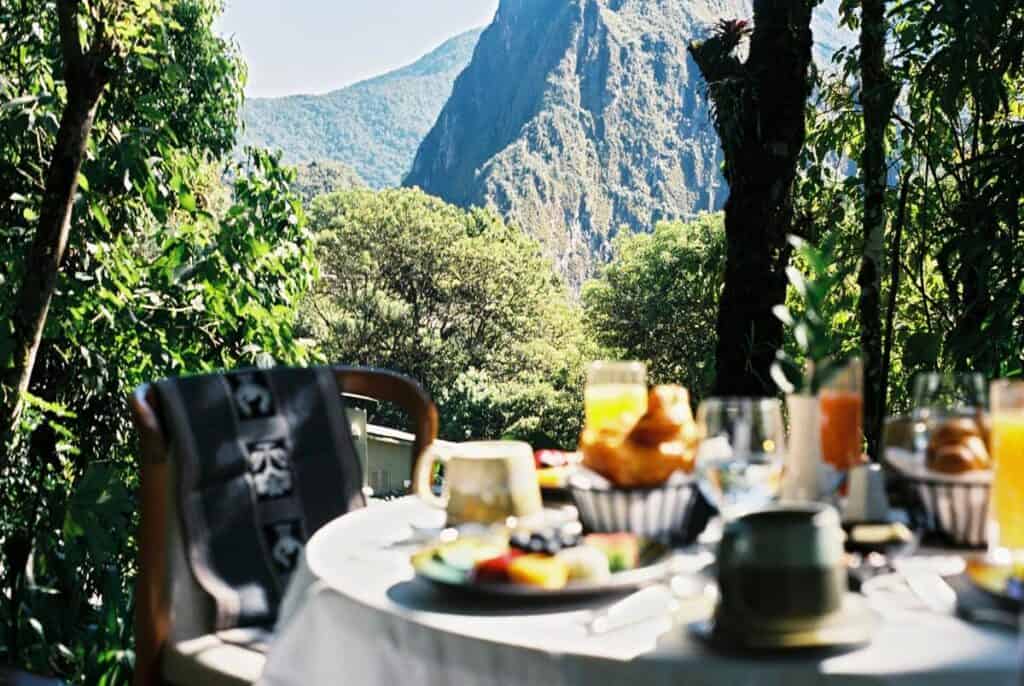
Have Lunch at the Tinkuy Restaurant
If you’re in the mood to splurge, this is the place to do it! The Tinkuy restaurant has wonderful food, high-quality service and an amazing location, right at the entrance of Machu Picchu! The unique spot lets you enjoy your meal whilst contemplating the Inca Citadel. It is part of the Belmond Sanctuary Lodge Hotel, a luxurious place to relax, rest and recharge after you see the Machu Picchu ruins.
Enjoy a meal at the Tinkuy Restaurant on our 5-day luxury Inca Trail tour (included in the price). Or, if you trek to Machu Picchu with us and your tour includes a night’s stay in a hotel in Aguas Calientes, you might consider upgrading your hotel to live the experience at the luxury Sanctuary Lodge Hotel and the Tinkuy Restaurant.
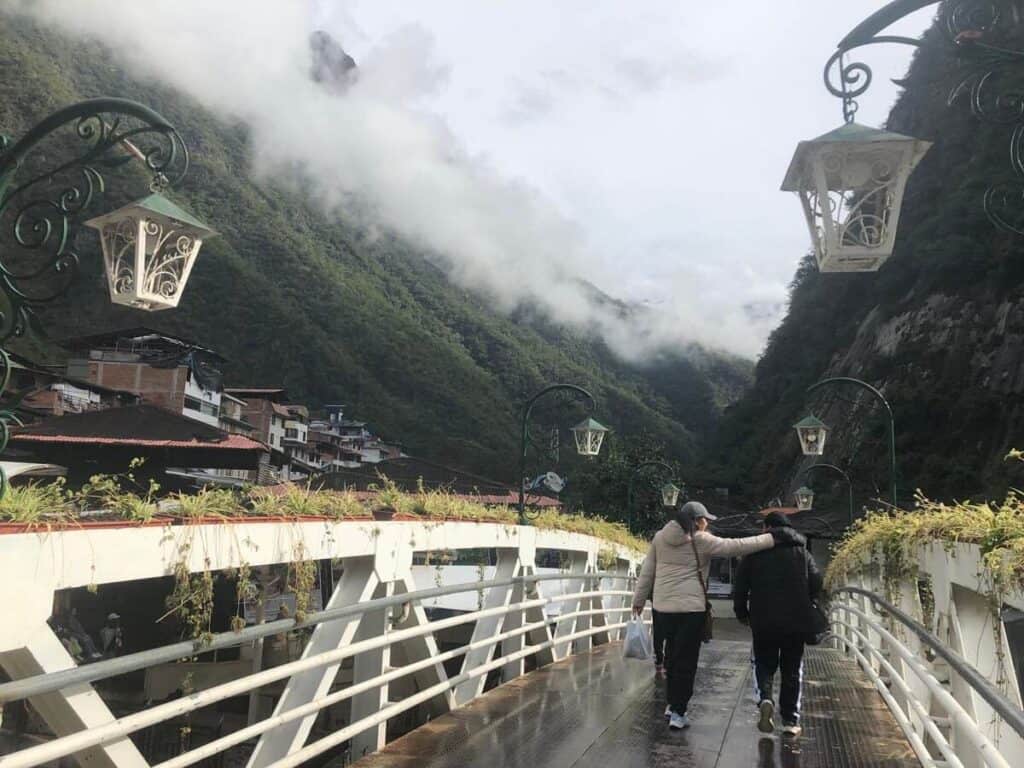
Other Cities Near Machu Picchu to Visit
There are lots of things to do near Machu Picchu. The starting point for any Machu Picchu tour is the multicultural city of Cusco. Plan on spending at least two days exploring Cusco, though we think a three-day itinerary is even better.
No visit to Cusco and Machu Picchu is complete without a tour through the Sacred Valley, too. Some of the main highlights there include the “living Inca city” of Ollantaytambo, Pisac and Urubamba. We tell you how to plan the best tour through the Sacred Valley here.
For a bit of a taste of everything, we’ve put together what we consider the “must-see” tour of Machu Picchu – a 5-day tour that includes the main highlights and, if you’re up for it, a taste of the Inca Trail, too!
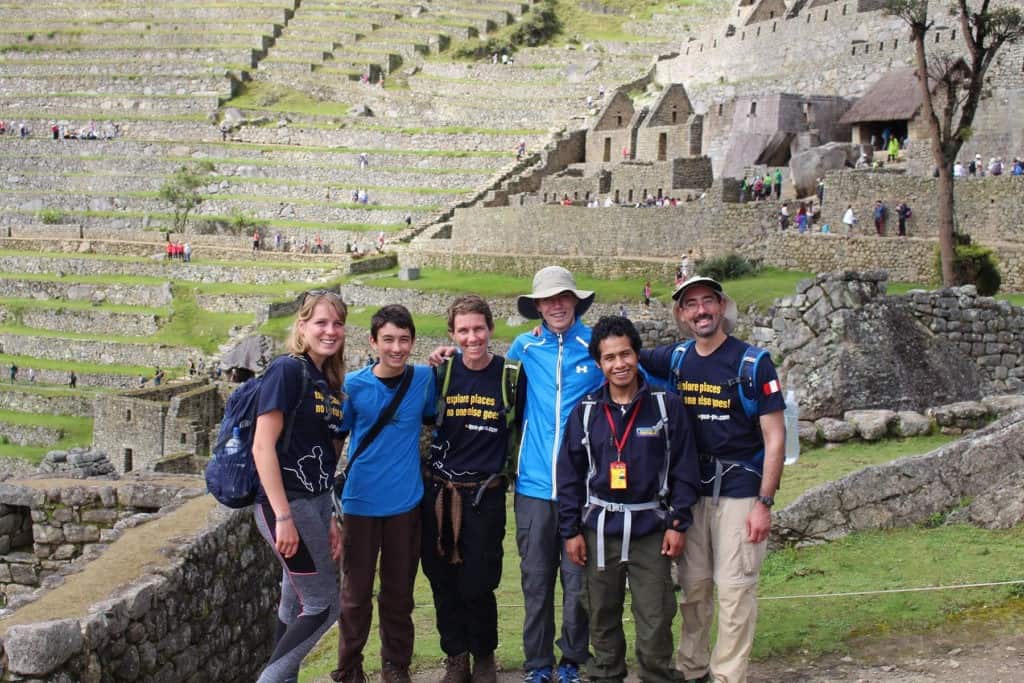
More Resources: How to Plan Your Trip to the Lost City of the Incas in 2025
A majestic experience like this one requires a bit of planning and organization but, trust us, it is well worth it! You are about to visit one of the New Seven Wonders of the World. So, don’t feel overwhelmed with all information, let’s go step by step.
Grab your favourite drink, and take a moment to check out these useful posts we have prepared for you:
- How to Get There – should you hike or take the train with PeruRail or IncaRail? We go through all the options.
- Best Time to Visit Machu Picchu – from April to October is the peak season and best time to visit the famous Inca site.
- What to wear for Machu Picchu
- Does Machu Picchu Live Up to the Hype? – we go through 7 reasons why we think it does!
- Alternatives to Machu Picchu – maybe you’ve already been, or maybe you’re just not convinced, but if you want to skip Machu Picchu on your trip to Peru, we offer some equally stunning alternative places to visit instead.
- Altitude Acclimatization – you don’t want to fall victim to altitude sickness at Machu Picchu! Follow the advice in our blog and you’ll do just fine.
- 7 Amazing Hikes at Machu Picchu: Whether you are interested in the Salkantay Trek, Lares Trek, Choquequirao, or another route, there are plenty of options to suit all levels and interests.
So Many Things To Do at Machu Picchu!
This world heritage site is the most emblematic cultural and Peru’s natural area that attracts travellers from every part of the world. You will be surprised at all the different things to do at Machu Picchu, such as learning about the connection between the Andean cosmic world and its marvellous biodiversity.
In addition, when you explore some of the places to go in Machu Picchu – its constructions, ceremonial centres and aqueducts, just to name a few – you will have a diverse interpretation of what the citadel really is. So, take this trip as a reward of feelings and moments that will leave an unforgettable mark on your life. That is the best way to travel to Machu Picchu.
Like It? Pin It! 
Sources
Wust, (2010). Machu Picchu. Song of Stone. Walter H. Wust Ediciones SAC
This post was originally published on 3 April, 2017. It was updated on 25 July, 2025.

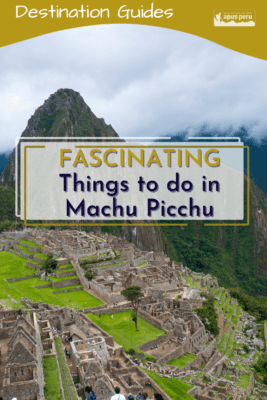
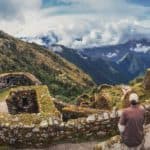
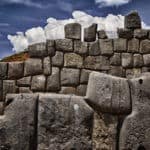
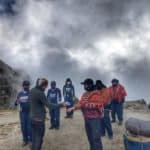




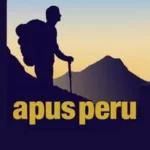

Good post about visiting Machu Picchu. Informative and to the point. I was there last year and LOVED Peru.
Thank You! It is such a beautiful and inspiring place!